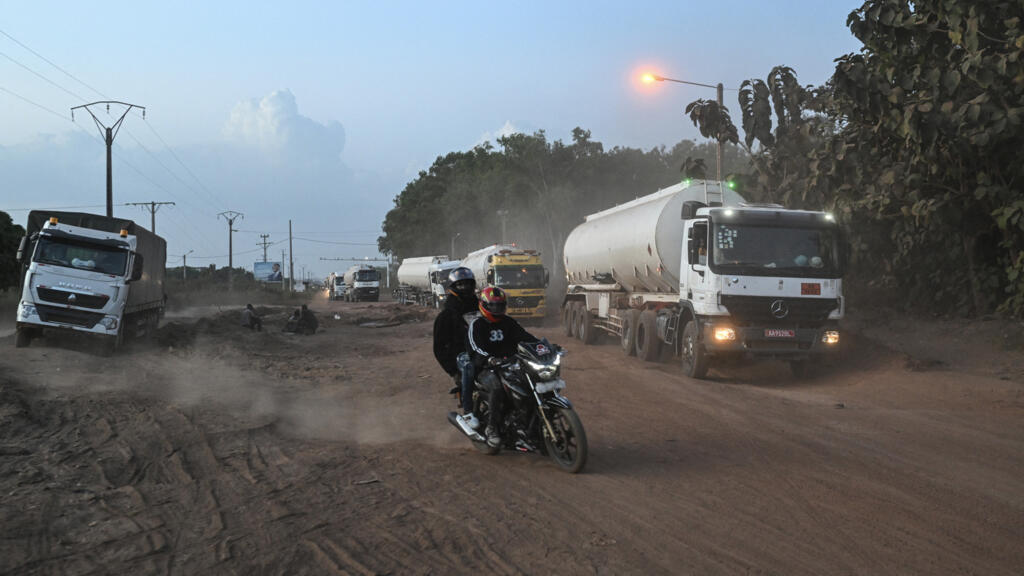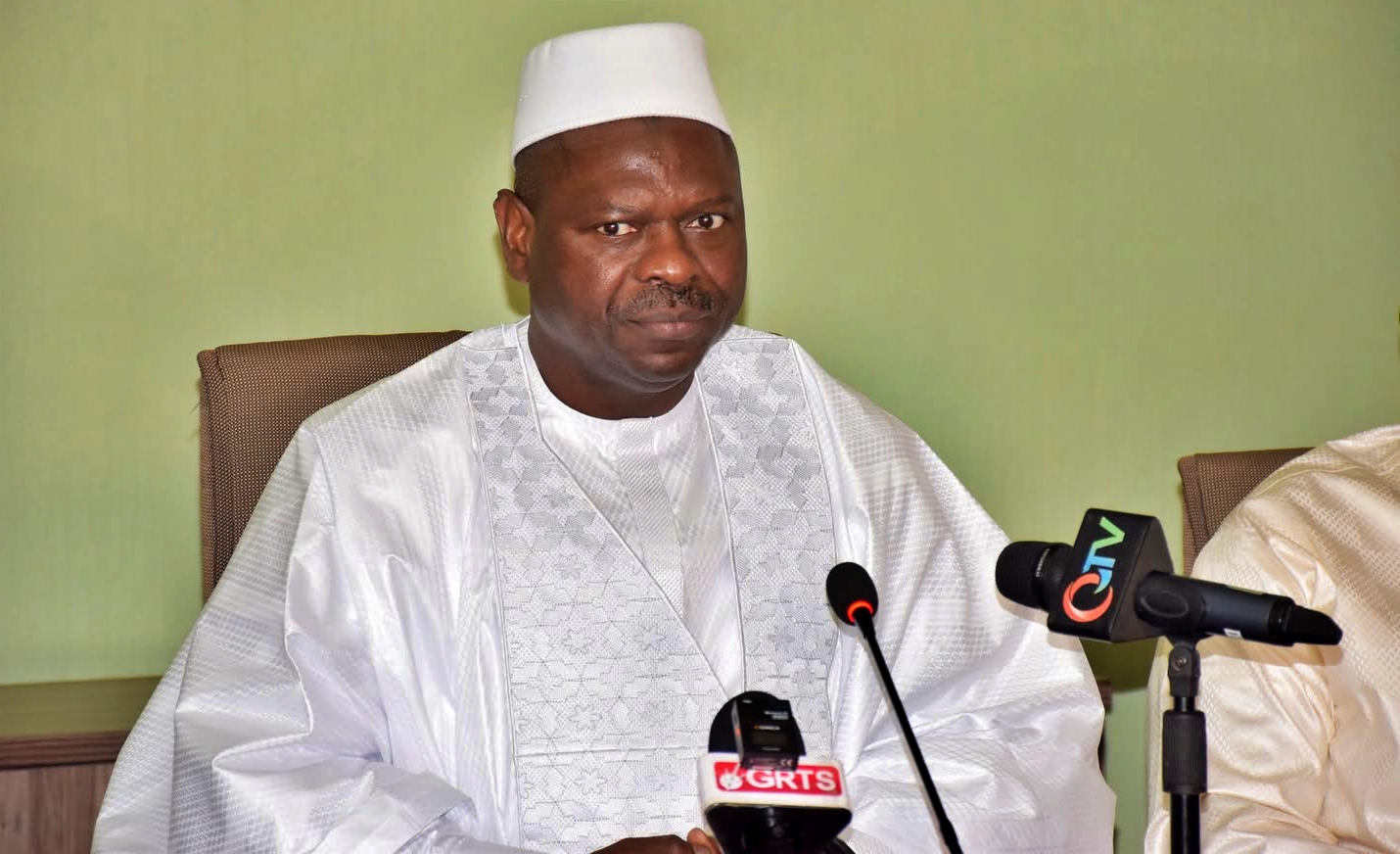Gambiaj.com – (BANJUL, The Gambia) – The African Development Bank’s 2025 Country Diagnostic Note on The Gambia is out and offers a candid assessment of the nation’s economic challenges and prospects. Beneath the technical language of macroeconomics and fiscal policy lies a message that resonates deeply with the everyday Gambian: unless decisive reforms are made, rising costs, joblessness, and a weak private sector will continue to choke opportunities and make life harder for ordinary citizens.
For the ordinary Gambian, this report isn’t just a technocratic review; it tells a story of challenges that affect daily lives, jobs, prices, and opportunities.
From all indications, the need for urgent fixes was conveyed to Gambian authorities when a team of the AfDB’s top officials visited The Gambia in mid-April, even paying a courtesy visit to President Adama Barrow at State House.
The Gambia continues to spend beyond its means.
In 2023, the budget deficit widened to 5.7 percent of GDP—money borrowed mostly from foreign donors to fund infrastructure projects. While there is a projected decline in the deficit over the next two years, this optimism hinges on improved tax collection, particularly from a largely informal economy where nearly 60 percent of Gambians earn their living outside formal structures.
High dependency on grants, which made up almost 40 percent of government revenue in 2023, is also a risk. Without building robust domestic revenue systems, the country’s financial independence will remain fragile.
One of the most immediate pressures Gambians feel is inflation. Prices rose steeply in 2023, with overall inflation hitting 17 percent. Food and energy costs in particular soared, compounded by a weakened dalasi and global price shocks.
This is not just an abstract figure—it means families are paying more for rice, cooking oil, electricity, and transport. While the Central Bank has tightened monetary policy in response, its tools have limited impact because much of the inflation is imported.
This cost-of-living crisis is worsened by a challenging business environment that deters local entrepreneurship and foreign investment.
High taxes, Poor infrastructure, Limited Access to Financing and Unreliable Electricty
Entrepreneurs face high taxes, poor infrastructure, limited access to financing, and unreliable electricity—conditions that have stunted the growth of small businesses.
Though opportunities exist in sectors like agro-processing and light manufacturing, without reforms to make doing business easier, these sectors will remain underdeveloped and job creation will stall.
With more than 60% of the population under 24, The Gambia must create jobs — fast. Yet over 60% of workers are in the informal sector, and unemployment remains high. The Gambia has the human capital to drive a transformation—but it is not being harnessed. Youth unemployment is high, and many who are employed remain in precarious, informal jobs.
The education system, while receiving increased investment, is not adequately preparing young people for the labor market. As a result, the country is failing to reap the benefits of its demographic dividend.
Industrial development remains weak. Manufacturing activities are limited to low-technology, labor-intensive sectors like food processing and textiles, most of which are unproductive.
The report reveals that the most productive segment—electrical equipment manufacturing—employs just 1.6 percent of the workforce in the sector. Meanwhile, the two largest employers in manufacturing—textiles and food—are also among the least productive, highlighting a structural problem that keeps wages low and limits growth.
The AfDB notes that while The Gambia’s public debt has decreased from 82.9 percent of GDP in 2022 to 71.8 percent in 2023, the country remains at high risk of debt distress.
The reduced debt is a positive sign, but the country’s ability to manage its debt remains shaky, especially with the expiration of international debt relief programs and new repayment pressures looming in 2025.
Public debt is still well above the ECOWAS regional average of 50.4 percent, and the domestic market remains too small to attract meaningful private investment into infrastructure or industry.
Weak Currency, Falling Foreign Reserves, and Persistent Trade Deficits
On the monetary front, the report points to declining net foreign assets and a weakening of the dalasi, which adds further strain to the country’s external balance. Though remittances remain a major source of foreign exchange—making up 22.4 percent of GDP in 2023—they are not enough to offset the trade deficit caused by heavy import dependence.
As a result, foreign reserves have been drawn down, and the Central Bank has had to intervene in the market just to ensure imports of essential goods.
The bigger picture painted by the report is one of slow structural transformation. Services dominate GDP and have contributed the most to recent growth, but this growth is neither inclusive nor sustainable.
Agriculture, which still employs a significant share of the population, continues to decline in productivity and contribution to GDP.
While there has been some movement of labor from agriculture to other sectors, this shift has not brought the kind of productivity gains seen in successful structural transformations.
The AfDB identifies several bottlenecks standing in the way: a small domestic market, weak infrastructure, limited access to credit, and high vulnerability to climate change.
Add to this the enduring issues of poor governance, weak institutional accountability, and a delay in the implementation of the long-awaited Anti-Corruption Commission, and the picture becomes clearer—The Gambia must fix its foundations before it can build a prosperous future.
Opportunities if Comprehensive Reforms are Implemented
Despite these grim findings, the report also identifies potential sources of strength. The country’s strategic geographic location positions it as a regional trade hub. The digital economy is expanding, with internet penetration rising from 35.6 percent in 2019 to 54.2 percent in 2022. Education spending is above regional averages, and the diaspora continues to play a vital role through remittances and technical contributions.
However, to unlock these opportunities, The Gambia must commit to a comprehensive reform agenda. This includes revamping the tax system, improving infrastructure, enhancing human capital development, and promoting good governance.
It also means addressing deep inequalities between urban and rural areas and ensuring that public spending is aligned with long-term development goals.
In essence, the AfDB’s report is a reminder that economic growth numbers mean little if they do not translate into better lives for people. For the average Gambian, it offers both a warning and a roadmap: the country can move forward, but only if it tackles its structural weaknesses head-on.
The decisions made today—by government, businesses, and citizens—will determine whether that future is one of progress or continued struggle.
This AFDB report underscores the urgent need for inclusive economic policies that create jobs, lower living costs, and improve governance.
For ordinary Gambians, the message is clear: the country has potential, but it needs deep reforms — not just more aid. Active civic engagement, transparency, and a demand for results from policymakers are more important than ever.










